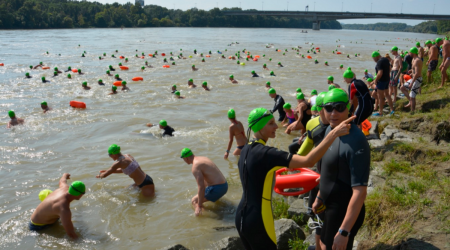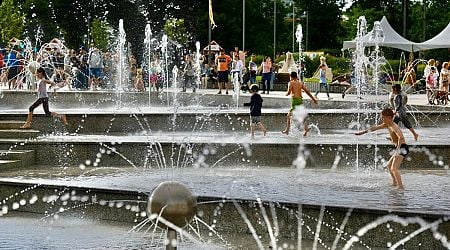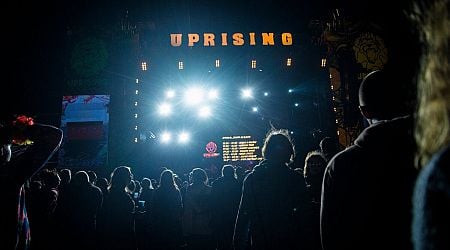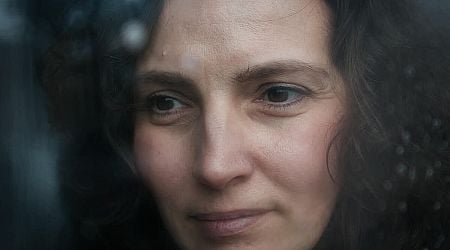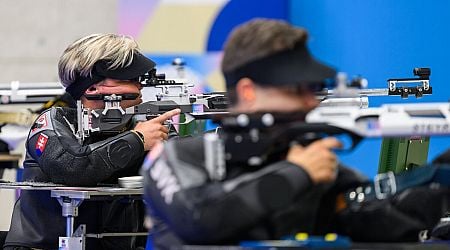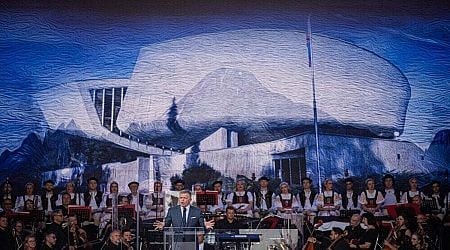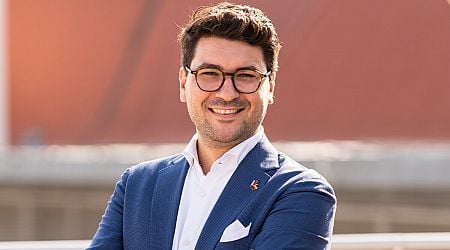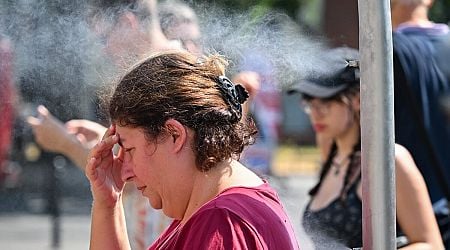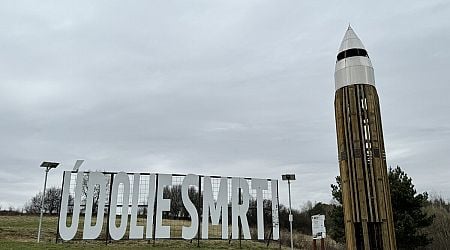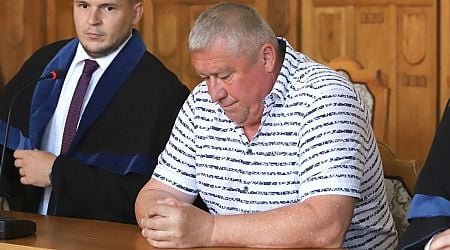Warhol town is full of war cemeteries. Will a Montmartre be in Medzilaborce?
Visitors to the art museum can contribute to the local economy.

You can read this exclusive content thanks to the FALATH & PARTNERS law firm, which assists American people with Slovak roots in obtaining Slovak citizenship and reconnecting them with the land of their ancestors.
When travelling from Humenné to Medzilaborce, you can't miss the impressive ruins of the former monastery in the village of Krásny Brod. Next to it is a newer monastery and a functional chapel. Behind the ruins, you will find a military cemetery for those who died in the First World War. This northeastern region of Slovakia relies on sacral and military monuments to attract tourists, but there is more than that to discover here.
Medzilaborce was an important railway junction during the First World War. It served as a transportation hub for soldiers heading to the Galician Front, near the Polish border. In 1915, it was briefly occupied by the Russians, resulting in heavy casualties on both sides. The area contains five military cemeteries hidden behind concrete fences, in the forest, or near regular cemeteries. Locating some of them can be a challenge.
The city also had a significant Jewish community, which was tragically destroyed during the Second World War. Outside the city, there is a large Jewish cemetery, albeit poorly marked and accessible only via a field and forest paths.
 Director of Warhol museum Martin Cubjak aims to connect art and the city. (Source: SME-Jozef Ryník)
Director of Warhol museum Martin Cubjak aims to connect art and the city. (Source: SME-Jozef Ryník)Complete facelift of the museum
In addition to the cemeteries in the district town, visitors can also see local churches, specifically an Orthodox temple. Located on a hill near the centre of the town, its golden dome shines in the hot summer sun.
However, this spiritual temple will soon be overshadowed by another building that is being reconstructed near the main road. The Museum of Andy Warhol, a famous pop art artist from the USA with roots in the nearby village of Miková, focused on modern art.
I'm meeting with the museum's director, Martin Cubjak, in front of the building. He arrives on a bicycle, and we then visit the construction site. The former cultural centre from the socialist era is being transformed beyond recognition. The interior is open, and the individual exhibition rooms will be interconnected. Cubjak also shows the black boxes on the roof, which will be used for various educational activities for children, as well as for art students who will be able to come for creative internships or workshops.
Cubjak describes the vision of transforming the town into a town of pop art, highlighting that students could potentially live at the museum for a short time, get involved in city life, and work on projects for the town, such as urban furniture or design.
The rooftop, which is already covered with walkable greenery, will also feature a small amphitheatre that can be used as an open-air cinema or for band performances.
As we walk the inside of the museum, we can see the rooms that will be transformed into a storage area, offices, and, most importantly, more modern exhibitions. The museum's renovation will primarily focus on interactivity, as well as incorporating new lighting, sound, and holographic elements. The renovated museum aims to showcase Warhol's multi-genre artistic talents.
"We will have a versatile, multi-genre, and interactive space. Furthermore, the building will have seamless connectivity between the interior and exterior, facilitated by the walkable roof and façade," explains Cubjak as we walk along the steel grates attached to the museum's facade. These grates can also serve as a viewing terrace, but only for those unafraid of heights.
 Andy Warhol is visible everywhere in Medzilaborce. (Source: SME-Jozef Ryník)
Andy Warhol is visible everywhere in Medzilaborce. (Source: SME-Jozef Ryník)Historical names of towns and villages in the Medzilaborce, Svidník and Stropkov districts
Today's territory of Slovakia was part of different monarchies throughout history, including the Austro-Hungarian Empire from 1867 until 1918. Until 1992, with the exception of the inter-war years 1939-1945 during which the Nazi-aligned Slovak state existed, the territory was a part of Czechoslovakia. As a result, the current names of Slovak municipalities were different.
Here's a list of the largest municipalities in the Medzilaborce, Svidník and Stropkov districts with their historical names:
Stropkov district
- Stropkov - Sztropkó
- Breznica - Nagyberezsnye
- Bukovce - Nagybukóc
- Duplín - Bányavölgy
- Havaj - Havaj
- Chotča - Hocsa
- Nižná Olšava - Alsóolsva
- Tisinec - Tizsény
- Turany nad Ondavou - Turány
- Vyšná Olšava - Felsőolsva
Svidník district
- Svidník - Felsővízköz
- Cernina - Felsőcsernye
- Giraltovce - Girált
- Kračúnovce - Karácsonmező
- Kružlová - Ruzsoly
- Kuková - Külemező
- Ladomirová - Ladomérvágása
- Okrúhle - Kerekrét
- Stročín - Szorocsány
- Vyšný Mirošov – Felsőmerse
Medzilaborce district
- Medzilaborce - Mezőlaborc
- Čabalovce - Csabaháza
- Čabiny - Felsócsebény
- Čertižné - Nagycsertész
- Habura - Laborcfő
- Kalinov - Kálnó
- Krásny Brod - Laborcrév
- Ňagov - Nyágó
- Radvaň nad Laborcom - Izbugyaradvány
- Volica - Ökröske
The full list of all Slovak municipalities, including their historical names, can be found at ww.geni.sk (in Slovak only).
The booming budget
The Prešov Region, responsible for the project, still needs to secure funds for technology. It is estimated that around €2.4 million will be required. The costs for the reconstruction have exceeded the original budget, increasing from around seven to over €12 million.
Originally, only an emergency restoration of the building was planned, as it had issues such as a leaking roof, inadequate toilets, and no elevator for immobile people. However, the director advocated for a full-scale reconstruction with the government and the region.
The project began in April 2023 and was anticipated to take 18 months.
However, it is now evident that this timeline may not be feasible. Cubjak believes that the construction may realistically be completed by the end of the year, but the exhibit might only open just before the summer season next year.
Impulse for tourism
Medzilaborce is not a town known for its historical monuments. The city center mainly comprises buildings from the socialist era and churches. Its main attraction is the renovated museum of modern art.
"Before the museum closed, we had over 12,000 visitors during the summer season, and some days we had to regulate entry," Cubjak recalls. Annual attendance was around 25,000. After it reopens, he estimates that traffic may double. He is concerned whether the town will be able to handle an influx of so many tourists.
"We don't want people to come to the museum for just two hours, spend 100 euros here, and then leave. We would like them to contribute to the local economy as well," its director explains, showing the plans to integrate the museum with the town.
According to him, the town and its surroundings have an opportunity to attract tourists for longer periods. The plan is to encourage locals to open small cafes and shops, aiming to create an atmosphere similar to Montmartre in Paris.
The mayor of Medzilaborce, Vladislav Višňovský, is optimistic about the potential for new tourism and gastronomy businesses. He mentions that new accommodation and dining establishments are being established in villages like Habura, Čabiny, and Palota. Nowadays, there are just small family-run guesthouses in these areas.
Presently, there are only two hotels in Medzilaborce, which are insufficient for accommodating large numbers of tourists. There is also a limited number of restaurants in the town. However, references to Andy Warhol can be found everywhere. We notice the signposts and portraits of Warhol, as well as guesthouses and an art hotel named after the artist. These references are sporadic and do not fully capture the essence of Warhol's work and name.
 Rastislav Slivka and his partner Dominika Varcholová manage guest house Driečna. (Source: SME-Jozef Ryník)
Rastislav Slivka and his partner Dominika Varcholová manage guest house Driečna. (Source: SME-Jozef Ryník)How a farmer built a guest house
Rastislav Slivka's family is from Driečna, which is part of Vladiča village in Stropkov district. He began his career as a farmer, primarily focusing on raising cattle and sheep. However, over a decade ago, he decided to diversify his business by establishing a guest house.
Due to the challenges he was facing, such as his sheep being killed by wolves, he realised that he needed a more stable business than cattle breeding.
In the serene village of Driečna, Slivka decided to construct a log cabin, deviating from the local tradition. Rather than renovating the old house, he opted to build a new one to accommodate his plans for a larger guest house. The current capacity of the pension is 22 beds, with the intention to expand further.
Half of the construction costs were covered by European funds, while the remaining expenses came from Slivka's personal savings. Despite the EU financial support, he criticises the bureaucratic processes involved in accessing European funds.
Visitors all year round
Dominika Varcholová, Slivka's partner who helps manage the guest house, mentions that there are limited accommodation options in this area, allowing them to cater to a wide range of guests.The guest house welcomes a particular focus on families with children who enjoy nature and tranquility.
In front of the log cabin there is a children's playground and behind it, a small covered gymnasium is nearing completion. Aside from families, the guesthouse also attracts sports clubs, schools, and companies for team-building activities, which led to the addition of a wellness centre on the premises.
Operating year-round is crucial for this business. While summers are busy, they also serve companies during the quieter spring and autumn months. Additionally, there is a small ski lift behind the guesthouse, allowing for ski courses in the winter.
Romania has already overtaken us
"Cyclists from Poland also come to us, while we can go and learn how tourism is developing over there," remarks Slivka.
In Poland, state support for local tourism works much better than in Slovakia. "A Pole comes up with an idea to expand a guest house and gets the money very quickly. We have to fight for projects from European funds, and even then we often get nothing because we don't fit into some scheme. Projects are often meaningless," Slivka says, describing his own experience.
"Go see the Solina reservoir in Poland and see how life is there. You feel like you're on a beach promenade in Croatia," adds Varcholová. There are souvenir shops, restaurants, and a lot of people into the evening.
"Poles have the heart of businessmen, they know how to make a tourist attraction out of ordinary stone, we don't know that, even though we have tourist gems," she thinks. On the other hand, she admits that Poles also go to Slovakia for a quieter vacation without mass tourism. Pension Driečna provides them with this.
The owner of the guest house, who is also a motorcyclist, adds that the Romanians have already overtaken Slovaks in the development of tourism. "They have built an incredible amount of services over the last years," he adds.
 War cementeries in Medzilaborce are hidden from tourists. (Source: SME-Jozef Ryník)
War cementeries in Medzilaborce are hidden from tourists. (Source: SME-Jozef Ryník)Toothless cyclists
The deficiencies in Slovakia are evident in the maintenance of local roads. While some repairs have been made in recent years, there are still sections where the roads are riddled with potholes, making it difficult for even cyclists to pass through without losing their teeth.
"If the roads were properly maintained, they would likely be used more, as heavy trucks rarely pass through here," adds Slivka. Additionally, the bicycle paths in the forest are often neglected and full of overgrown trees.
In Driečná, entrepreneurs are planning to expand the restaurant's capacity to accommodate up to 120 people so it can host weddings and celebrations. They also intend to add small cottages to the guest house and expand the children's amusement park.
Despite employing ten people, the entrepreneurs are still facing a shortage of manpower. "People tend to leave this region rather than arrive, and not everyone is willing to work," concludes Slivka. The owners themselves work in the guest house and can only take short vacations during the winter.
 Manager of Vermex Lokal restaurant Erik Ducár relies on local clients in Svidník. (Source: SME-Jozef Ryník)
Manager of Vermex Lokal restaurant Erik Ducár relies on local clients in Svidník. (Source: SME-Jozef Ryník)Local food business
Svidník relies heavily on military history to attract tourists. Anyone who gets hungry after observing military equipment can visit a local restaurant called Vernex Lokal. The restaurant has a modern design with wood, industrial lamps, and stylish furniture, which is unexpected for a small town in northeastern Slovakia.
The family business is managed by Erik Ducár, whose father Ladislav started it in the early 1990s. They began with a grocery shop, food wholesale and later expanded into the gastro business, now owning several establishments in Svidník and nearby Stropkov, including restaurants, cafes, wine bars, and tattoo studios. The business now employs 50 people.
Erik's sister, Veronika, who is an artist and contributes graphics for their companies, is responsible for the tattoo studios.
The restaurant in the city centre serves typical pub dishes like wings, hamburgers, but also risotto, and pasta.
The Poles have better services
The manager described the clientele as mainly locals with some tourists, especially hikers on the SNP trail. Svidník is a popular stop on a tourist route in Slovakia due to its military history, even attracting foreign tourists.
The number of Polish tourists visiting the town and local water park has declined in recent years. The manager thinks the Poles have better facilities and services. Moreover, he highlights the lack of cooperation among services in the tourism industry in Slovakia.
Ducár mentions that visitors typically stay for the weekend, leading the company to consider offering apartments in the future instead of building a guest house or hotel. He emphasises the need for improved marketing and more diverse services to attract a wider range of tourists beyond those interested in military history.





















